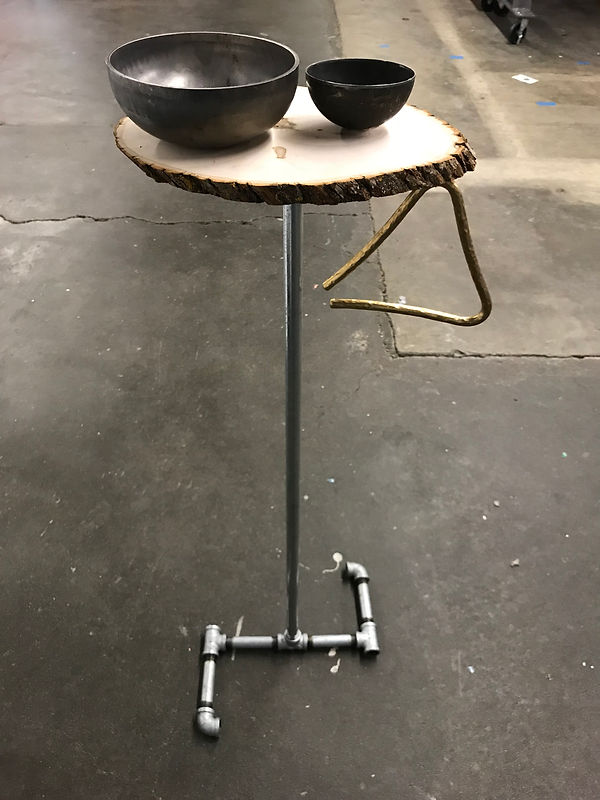Meditation Machine (2018)

Meditation Machine was exhibited at the DXARTS Fabrication Lab Gallery Space for my final project for Dr. Afroditi Psarra's course on Mechatronic Art at the University of Washington.
Conceptual Axis
Meditation Machine was an interactive sound sculpture that sought to explore the dissonance between a performer's internal and external space and create awareness that though a performer may appear calm, the internal experience of performing can be anything but.
The installation consists of two Tibetan Prayer Bowls as well as a Triangle. These instruments were deliberately chosen both because of their cultural implications and electrical conductivity. The use of Prayer Bowls was to create a contrast between the original purpose of the instruments (meditation and contemplation) and the experience of playing them decontextualized in a contemporary classical environment.
The Triangle was chosen because it is commonly perceived to be the "easiest" of percussion instruments to play, but as Participatory Journalist George Plimpton discovered during his harrowing tenure under the baton of Leonard Bernstein, to play the triangle is a uniquely tense experience. Plimpton stated it well when he wrote; “One reason it was terrifying was that in music you cannot make a mistake. If you make a mistake, a big one, you destroy a work of art. The thought of doing this nags, of course, at the consciousness of all musicians, even the very good ones.”
Meditation Machine makes use of granular synthesis to create increasingly active auditory clouds as the mallets come closer to the instruments, reflecting the anxiety of performative action.
References
https://www.instructables.com/id/How-To-Use-Touch-Sensors-With-Arduino/
Technology
Arduino
Conductive Thread
DIY Capacitive Sensors
Open Source Software
Arduino
SuperCollider
The code for Meditation Machine is available on my GitHub.

E-Mallets. Produced by modifying brass glockenspiel mallets.

Circuit diagram for Meditation Machine. Made in Fritzing.